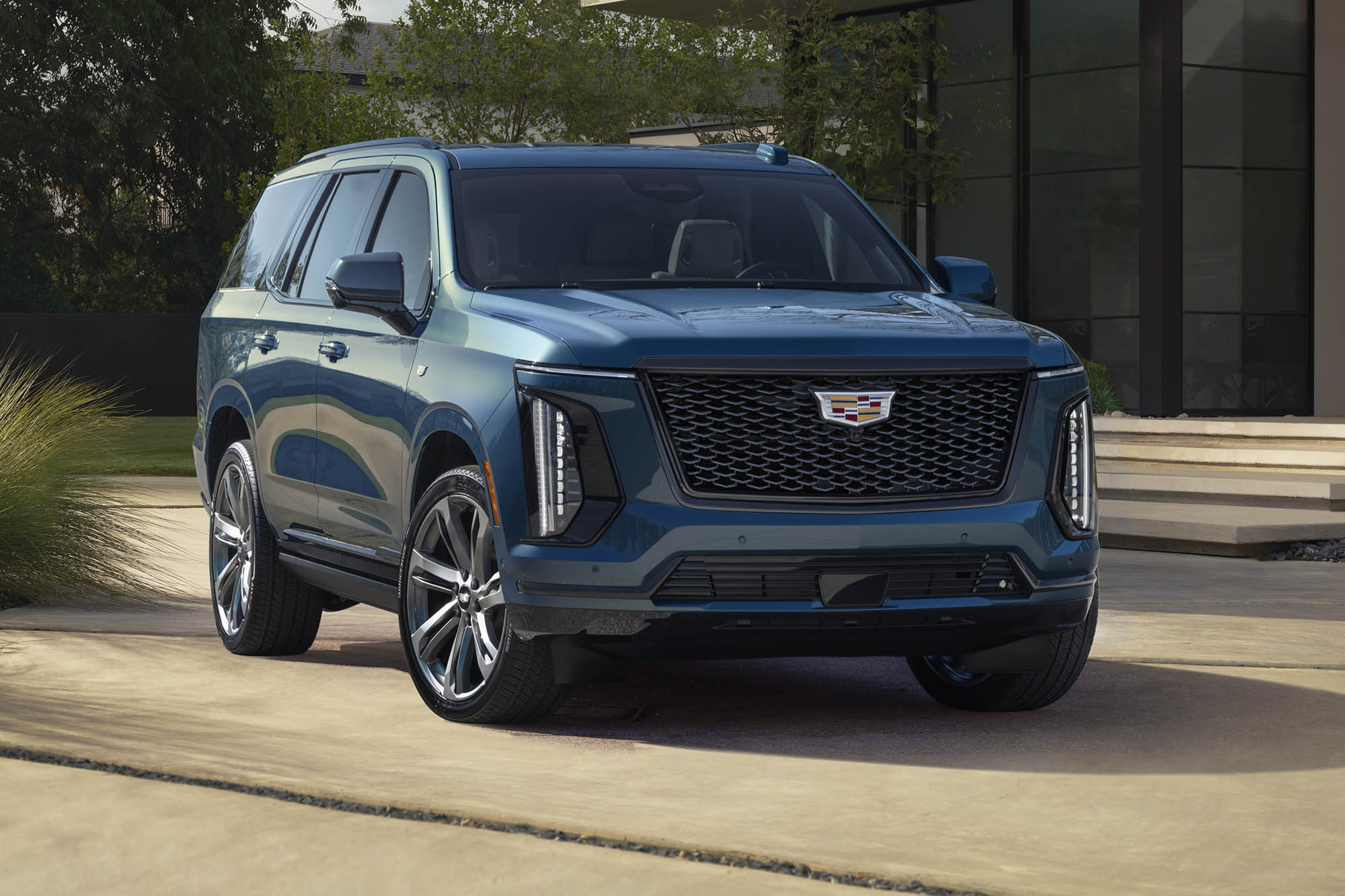5 Drawbacks to Big Wheels on Cars
Although sometimes stylish, big wheels come with several downsides.
 Cadillac
Cadillac
The 2025 Cadillac Escalade is now available with massive 24-inch wheels, and big wheels are becoming increasingly common in many automotive market segments. But they might not be the best choice if you're looking for comfort, affordability, and efficiency.
Bigger Wheels Deliver a Harsher Ride
Quantifying ride quality is easier said than done, but most reviewers agree that bigger wheels make a car less comfortable.
That's because they're often wrapped by low-profile tires that have a thinner sidewall than the tires fitted to smaller wheels. A thinner sidewall means there's less rubber between you and the road, and thus less shock absorption from imperfections on the surface.
It's easy to determine whether a tire is low profile by reading the size.
Bigger Wheels Are More Expensive
You'll pay more for that harsher ride. Most carmakers market bigger wheels as an upgrade, so they're often offered at an extra cost, bundled into an option package, or made standard on upmarket trim levels.
For example, the 2025 Cadillac CT5 comes standard with 18-inch wheels when buyers select the Premium Luxury trim level and rear-wheel drive. Depending on the finish, the 20-inch wheels cost between $800 and $2,995.
Routine Maintenance Will Cost More
Bigger wheels naturally require bigger — and more expensive — tires. The base 2024 Hyundai Sonata SE rides on 17-inch wheels, while the performance-oriented N Line trim level ships with 19-inch wheels.
At the time of this article's publication, a Goodyear tire that fits the 17-inch wheels costs about $157 through online store Tire Rack, while the 19-inch option for the Sonata N-Line costs about $207. Before factoring in taxes, that means a new set of rubber will likely cost at least $200 more for the bigger wheels.
Bigger Wheels Reduce Fuel Efficiency
Choosing smaller wheels improves your car's fuel economy for several reasons. Smaller wheels tend to weigh less, and weight is the sworn enemy of efficiency. More importantly, bigger tires have more rolling resistance so they require more energy to move.
For instance, the base 2025 Toyota Camry LE with 16-inch wheels is rated at 53/50/51 mpg city/highway/combined. The next model up is the SE, which ships with 18-inch wheels. As a result, its fuel-economy numbers drop to 48/47/47 mpg.
While the additional features included in the SE trim add weight, the difference is relatively minor: The LE weighs 3,450 pounds, compared with 3,494 pounds for the SE.
An EV's Range Is Reduced With Larger Wheels
Big wheels can also significantly reduce the range of an electric vehicle (EV).
For example, with 21-inch wheels the 2024 Rivian R1T Dual Max is EPA rated at having 410 miles of range. Opting for the available 22-inch wheels drops the maximum range to 380 miles.
The 2024 Polestar 2 Single Motor has a 320-mile range rating with 19-inch wheels and a 307-mile rating with 20-inch wheels.
Written by humans.
Edited by humans.
 Ronan Glon
Ronan GlonRonan Glon is an American journalist and automotive historian based in France. He enjoys working on old cars and spending time outdoors seeking out his next project car.
Related articles
View more related articles